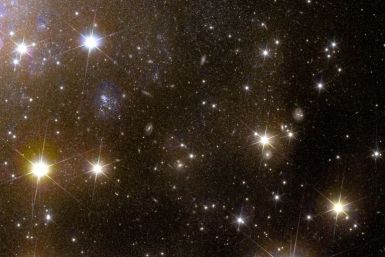An asteroid that could level a city now has a 3.1-percent chance of striking Earth in 2032, according to NASA data released Tuesday -- making it the most threatening space rock ever recorded by modern forecasting.
The first full moon of 2025 is just around the corner and seeing it at its brightest is worth the experience.
NASA astronauts have spent seven months aboard the International Space Station, far exceeding their planned eight-day mission after safety concerns grounded their return spacecraft. Despite the extended stay, they remain focused on scientific research and maintenance tasks, with plans to return to Earth in April 2025 aboard a SpaceX vehicle.
US company Firefly Aerospace said Tuesday it is aiming to launch a lander to the Moon next week under an experimental NASA program that partners with the commercial sector to reduce costs.
In 2024 Boeing lost millions of dollars in its contract with NASA to SpaceX, more than 200 whistleblowers reported it to the Federal Aviation Administration (FAA), and two Boeing 737-800s crashed within a day of each other in Norway and South Korea.
Social media users were dumbfounded by the appearance of the astronauts who have been stuck in space since June in a newly released holiday photo.
NASA announced updates to its Artemis Moon missions, which will delay the Artemis II crewed flight to April 2026 and Artemis III to 2027.
US President-elect Donald Trump on Wednesday nominated Jared Isaacman, the online payments billionaire and the first private astronaut to ever perform a spacewalk, as the next head of NASA. The nod could spark questions about potential conflicts of interest, given Isaacman's extensive financial ties to Elon Musk, who is set to co-chair a government efficiency commission and is one of Trump's closest advisors.
The spacecraft, launched in 1977, is 15 billion miles away from Earth. It stopped sending data but NASA managed to get it restarted.
Camp Century was a U.S. military base that became buried by snow and ice after being abandoned in 1967.
A mysterious "unexpected odor" was reported by Russian astronauts after a spacecraft delivering supplies docked at the International Space Station.
Bill Nelson said the reported contacts, if confirmed, 'would be concerning, particularly for NASA and the Department of Defense.'
SpaceX on Sunday successfully flew the first-stage booster of its Starship megarocket back to the launch pad after a test flight.
Experience the brilliance of comet C/2023 A3, visible nightly this October, with its closest approach to Earth on October 12.
Troubled company axing 10 percent of workforce after 33,000 walked off job, halting production of the 737 MAX, 767, and 777 jets
The U.S. FAA gave SpaceX's Falcon 9 the green light to return to flight on Monday.
The Sahara Desert was hit by an extratropical cyclone earlier this month, leading some areas to receive more than 200 millimeters of rainfall.
Problem-plagued craft's two American astronauts are now stuck in space at least until planned arrival of SpaceX craft next year
SpaceX's new project, named the U.S. Deorbit Vehicle, is designed to deorbit the ISS, ensuring its re-entry into Earth's atmosphere minimizes risks to populated areas.
Starship, the world's most powerful rocket, is set for its next test flight on June 5, SpaceX announced on Friday.
The nova will appear as a bright spot between the Boötes and Hercules constellations, visible from the Northern Hemisphere.
After two years of rigorous training, ten Americans officially became astronauts on Tuesday, and are now eligible for planned NASA missions to the International Space Station, the Moon, and -- if all goes well -- to Mars.











































